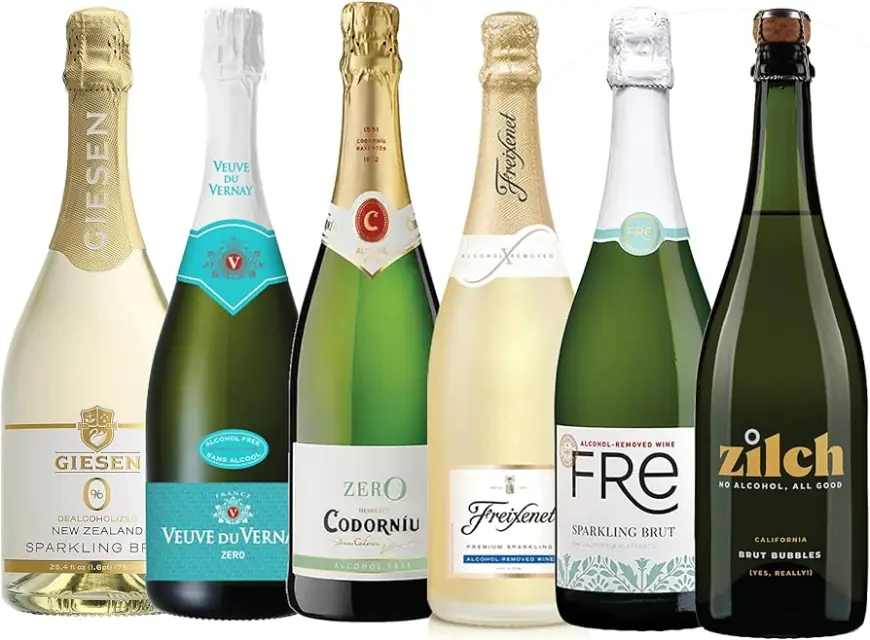The Rise of Non-Alcoholic Red Wine: Taste, Benefits, and Choices

In an era where mindful consumption is gaining prominence, non-alcoholic beverages have witnessed a remarkable surge in popularity. Among these, non-alcoholic red wine is a sophisticated alternative for those seeking the complex flavors and potential health benefits of red wine without the alcohol content.
Whether for health reasons, personal preference, or social situations, the market for non-alcoholic red wine is expanding, offering various options to cater to multiple palates.
The Making of Non-Alcoholic Red Wine
The production of non alcoholic red wine begins much like traditional winemaking. Grapes are harvested, crushed, and fermented, allowing yeasts to convert the natural sugars into alcohol. This process extracts the characteristic flavors, tannins, and color from the grape skins, resulting in a base red wine. The crucial difference lies in the subsequent step: alcohol removal.
Several methods are employed to dealcoholize wine while preserving its essential qualities. The most common techniques include:
- Vacuum Distillation: This method involves heating the wine under reduced pressure, which lowers the boiling point of alcohol. The alcohol evaporates at a lower temperature than the wine's aromatic compounds, allowing it to be collected separately. This process is effective but requires careful temperature control to prevent flavor degradation.
- Reverse Osmosis: In this technique, the wine is passed through a semi-permeable membrane that separates the alcohol and water molecules from the larger flavor and aroma compounds (the "retentate"). The alcohol is then distilled from the water, and the remaining retentate is recombined with the de-alcoholized water, sometimes with adjustments to achieve the desired concentration and flavor profile.
- Spinning Cone Column: This sophisticated method uses a vertical column with spinning cones to create a thin film of wine. Nitrogen gas is introduced, which strips away the volatile aroma compounds at a low temperature. The de-aromatized wine then undergoes further processing to remove the alcohol, typically through vacuum distillation. Finally, the recovered aroma compounds are reintroduced to the de-alcoholized base to restore the wine's original flavor complexity.
Each method has its advantages and potential drawbacks in terms of cost, efficiency, and impact on the final product's taste and aroma. Producers often choose a method based on the type of wine, desired quality, and cost considerations.
Flavor Profiles and Varieties
Non-alcoholic red wines are crafted from various grape varietals, mirroring their alcoholic counterparts. This allows consumers to find familiar flavor profiles they enjoy. Some common types include:
- Cabernet Sauvignon: Often exhibiting bold flavors of blackcurrant, cedar, and spice, with noticeable tannins.
- Merlot: Known for its softer tannins and red fruit flavors like cherry and plum, sometimes with chocolatey notes.
- Pinot Noir: Typically lighter-bodied with delicate aromas of red berries, earth, and hints of floral notes.
- Syrah/Shiraz: Offering a range from fruity (blackberry, plum) to spicy (pepper, smoke) depending on the climate and winemaking style.
- Blends: Many non-alcoholic red wines are blends of different grape varieties, aiming to create a balanced and complex flavor profile.
The sweetness level can also vary, from dry and tannic to semi-sweet or sweet, depending on the winemaking process and added sweeteners. The body and texture can range from light and refreshing to full and rich, influencing the overall drinking experience.
Health and Lifestyle Benefits
Non-alcoholic red wine retains many of the beneficial compounds found in regular red wine, primarily polyphenols like resveratrol, flavonoids, and anthocyanins, which are potent antioxidants. These compounds have been linked to several potential health benefits:
- Heart Health: Studies suggest that the polyphenols in non-alcoholic red wine may help lower blood pressure, reduce the risk of blood clots, and improve cholesterol levels, potentially contributing to a reduced risk of heart disease.
- Brain Health: Some research indicates that the antioxidants in red wine, including non-alcoholic versions, may have neuroprotective effects and could potentially slow the progression of neurodegenerative diseases.
- Cancer Prevention: While more research is needed, certain antioxidants found in red wine have been associated with a reduced risk of certain types of cancer.
- Improved Sleep: Unlike alcoholic beverages that disrupt sleep patterns, non-alcoholic red wine can be enjoyed without these negative effects.
- Lower Calorie Content: Non-alcoholic wine generally contains significantly fewer calories than its alcoholic counterpart, which can benefit weight management.
- No Hangover: A significant advantage is the absence of alcohol-related hangovers, allowing for enjoyment without the unpleasant after-effects.
Beyond the potential health benefits, non-alcoholic red wine offers a sophisticated and inclusive option for various occasions. It allows designated drivers, pregnant individuals, those with medical conditions, or anyone choosing to abstain from alcohol to partake in the social ritual of enjoying a glass of red wine.
Choosing the Right Non-Alcoholic Red Wine
Selecting a non-alcoholic red wine involves considering personal preferences and the intended occasion. Factors to keep in mind include:
- Grape Variety: Do you typically prefer bold Cabernet Sauvignon, fruity Merlot, or lighter Pinot Noir?
- Sweetness Level: Do you prefer a dry, tannic wine or something with a hint of sweetness?
- Body and Texture: Are you looking for a light and refreshing drink or a more full-bodied experience?
- Occasion: Will you be pairing it with a meal? If so, consider the food. Lighter-bodied reds pair well with grilled vegetables and lighter pasta dishes, while fuller-bodied options complement red meats and richer sauces.
- Reviews and Ratings: Reading reviews from other consumers can provide insights into the taste and quality of different brands and varieties.
The world of non-alcoholic red wine continuously evolves, with new producers and innovative techniques emerging. Exploring the available options can lead to discovering high-quality alternatives that closely mimic the taste and enjoyment of traditional red wine. While individual experiences may vary and non-alcoholic versions might not perfectly replicate the complex interplay of alcohol, tannins, and flavors found in their alcoholic counterparts, the progress in dealcoholization techniques has resulted in increasingly satisfying and nuanced non-alcoholic red wines.
What's Your Reaction?
 Like
0
Like
0
 Dislike
0
Dislike
0
 Love
0
Love
0
 Funny
0
Funny
0
 Angry
0
Angry
0
 Sad
0
Sad
0
 Wow
0
Wow
0





















































